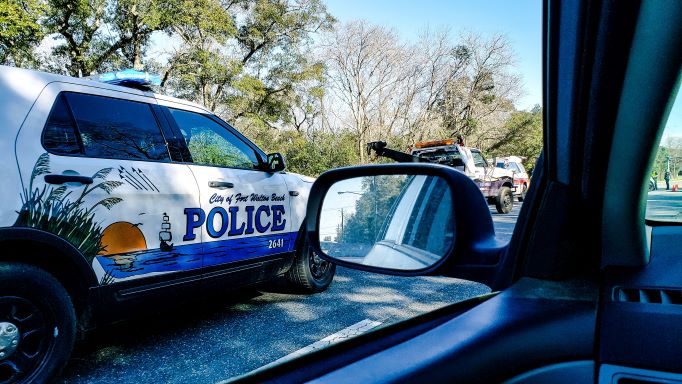Racing at high speeds is a dangerous activity that can end in tragedy. As an automotive safety expert, I have seen first-hand the devastation caused by car accidents resulting from racing-related activities. It’s important to understand why this type of behavior can lead to such serious consequences so that everyone can learn how to avoid these types of situations. In this article, I will explain what factors contribute to car accidents due to high speed racing and provide ways for drivers to stay safe on the road.
The thrill of driving fast has been around since cars were invented, but not all are aware of the risks associated with it. Racing provides dangerously high speeds which puts those involved at risk for collisions with other vehicles or objects; even experienced racers aren’t immune from potential danger. Factors like poor judgement, excessive speeding and impaired vision can lead to potentially fatal outcomes if proper care isn’t taken while driving.
It’s essential that we educate ourselves on the dangers behind racing and take necessary precautions while operating our own vehicles on public roads. Knowing when it’s time to slow down could be the difference between life or death – let’s make sure we’re taking all possible steps towards avoiding any terrible outcome.
Dangers Of Excessive Speed
Driving at a reckless speed poses an immense danger for everyone on the road. Not only does it increase the risk of losing control, but also reduces reaction time and stopping distance – making any potential hazards ahead almost impossible to avoid in time. High-speed driving can tempt drivers into taking risks they wouldn’t take under normal circumstances, such as running red lights or performing maneuvers beyond their skill level; these actions often have catastrophic consequences that threaten not just driver safety, but other motorists’ too.
All these scenarios pose significant dangers for both drivers and pedeall motorists need to understande higher impact force than those occurring at lower speeds dukeep herd kinetic energy generated by the speeding vehicle. This can cause greater damage and lead to catastrophic injuries or fatalities. Therefore it’s important for all motorists to understand the risks associated with over-speeding and drive responsibly in order to keep themselves athe nd others safe on the roads. Without proper knowledge about how dangerous fast driving a thrillingng themselves in danger every time they get behind the wheelDrivers need to understand future collisions from happening, we must examine factors that increase risk of collision.

Factors That Increase Risk Of Collision – Abogados de Accidentes Chula Vista
Racing at high speeds is a thrilling and exhilarating experience, but one that can lead to serious consequences. It’s important for drivers to understand the factors that increase their risk of collision when driving fast. Speed limits are set in place by Abogados de Accidentes Chula Vista law for safety reasons and it’s important to adhere to them as best you can; eaffectsimits increases the chances of losing control of your vehicle or colliding with another driver. Road conditions also play an essential role – potholes, debris, slippery surfaces, etc., often make it more difficult to keep a car under control at higher speeds. Tire condition has an effect on how well your car maneuvers around turns too; worn tires don’t have the same grip compared to those in good shape which will reduce handling capabilities. Finally, weather conditions like rain can cause roads to become slick while fog reduces visibility, both making it harder to drive safely even if you’re going slower than usual. In addition, inexperienced drivers should take extra caution because they lack the skills necessary for quick reactions needed in dangerous situations due to limited experience behind the wheel.
By understandingthe these different elements that can affect safety while driving fast, drivers can begin implementing strategies for avoiding accidents such as taking corners slowly and allowthe plenty of space between vehitoand behind them.
Strategies For Avoiding Accidents
Now that we have discussed the factors that can increase risk of collision, let us turn our focus to strategies for avoiding such accidents. The key here is risk reduction; while no one can guarantee complete safety on the roads, there are steps that drivers can take in order to decrease their chances of getting into an accident.
The first step is to practice safe driving habits at all times. This means following traffic laws and respecting speed limits, as well as anticipating other drivers’ behavior when navigating through a crowded intersection or rtoward Additionally, ensuring your vehicle is regularly maintained and in good condition should be a priority – tcans checking tire pressure, brakes, and other important components before each drive.
It’s also essential to be aware of your own state of mind when behind the wheel: being alert and attentive will go a long way towards keeping you out of harm’s way. When drowsy or distracted, it’s best not to get behind the wheel until you are able to concentrate better. By taking these proactive measures ahead of time, motorists greaaway ouruce their risk of getting into an accident on the roadways.
Conclusion
The risks of driving at high speeds are real and should not be taken lightly. Excessive speed increases the likelihood of a car accident, which can have potentially devastating consequences. To reduce your risk while on the road, it is important to stay aware of your surroundings and drive within the posted speed limits whenever possible. Additionally, you should take extra precautions when driving in poor weather or visibility conditions and ensure that your vehicle is up-to-date with regular maintenance checks for optimal performance. As an automotive safety expert, I cannot emphasize enough how vital it is to practice safe driving habits and always adhere to current traffic laws if you want to avoid getting into an accident. Let’s work together to make sure our roads remain safe havens for all those who traverse them – now and in the future!